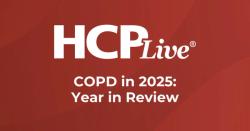
OR WAIT null SECS
Jacques-Eric Gottenberg, MD, PhD: Promising Phase 2 Results for Nipocalimab in Sjögren's Treatment
Jacques-Eric Gottenberg, MD, PhD, discusses the encouraging results of a phase 2 study evaluating nipocalimab for the treatment of Sjögren's syndrome.
In an interview with HCPLive, Jacques-Eric Gottenberg, MD, PhD, associated with the Department of Rheumatology at Strasbourg University Hospital, France, discusses the results of a study presented at the 2024 European Congress of Rheumatology (EULAR)evaluating the efficacy and safety of nipocalimab, an anti-neonatal Fc receptor (FcRn)monoclonal antibody, for the treatment of Sjögren's disease. The team assessed the findings from the phase 2, multicenter, randomized, placebo-controlled, double-blind DAHLIAS trial.
What makes Sjögren's disease a suitable target for treatment with an anti-FcRn monoclonal antibody like nibicalamab?
Jacques-Eric Gottenberg, MD, PhD: Sjögren's syndrome is primarily a B-cell-related disease where immune complexes, which are autoantibodies that bind to one another and to antigens, play an important role in the disease's pathogenesis. In this disease, these complexes typically include rheumatoid factor and various other autoantibodies. Patients also exhibit hypergammaglobulinemia. Therefore, it makes sense to target this disease by decreasing the levels of immune complexes and autoantibodies.
Can you tell me more about the phase 2 DAHLIAS study?
JG: Yes, the DAHLIAS study was the first study of an FcRn antagonist. It was a sizable phase 2, placebo-controlled, double-blind trial involving 163 patients. These patients were divided into 3 groups: placebo, nipocalimab at 5 mg/kg, and nipocalimab at 15 mg/kg. The drug was administered intravenously every 2 weeks. The primary endpoint, evaluated at week 24, was the change in the clinical European League Against Rheumatism Sjögren’s Syndrome Disease Activity Index (ESSDAI) score, which measures systemic complications in Sjögren's syndrome across 11 domains. Patients continued to be followed up until week 30.
What were the ultimate results of this study, and did they surprise you?
JG: The results were clearly positive, with a significant decrease in the clinical ESSDAI score in the high-dose nipocalimab group (15 mg/kg) compared to the placebo group. In this group, the mean clinical ESSDAI score at enrollment was around 10 and decreased by two-thirds to approximately 4 by the end of the study—a significant reduction compared to placebo. While it's difficult to say if I was surprised, I'm very happy for the patients. It's important to have a promising drug that shows positive results in phase 2, and it will be crucial to confirm these results in phase 3. Additionally, not only were systemic complications improved, but secondary endpoints relevant to patients were also consistently improved.
What are the next steps in the clinical development of nipocalimab for this condition?
JG: Although I'm not privy to Janssen's exact plans, I hope there will be a phase 3 trial with a larger sample population to confirm these results. It will be important to delve deeper into secondary endpoints and evaluate the effects on symptoms like pain, fatigue, and dryness. This requires enrolling a large number of patients and stratifying them based on symptom burden at baseline.
Based on these results, what are the potential implications for future treatment of Sjögren's syndrome?
JG: The implications highlight the importance of immune complexes and immunology in this disease. Nipocalimab seems to decrease immune complexes, which in turn may reduce the activation of interferon. Although this is speculative until results confirm a decrease in the interferon signature, the trial teaches us a lot about the role of antibodies and immune complexes. Targeting this vicious cycle between immune complexes and interferon activation could be crucial.
Are there any key highlights or anything else you would like our audience to know?
JG: The key message is that in a disease with no currently approved drug, the results of this trial, along with previous positive trials, provide optimism. Sjögren's syndrome affects about 0.1% of the population and is very disabling. I hope that this drug and others will help alleviate the burden of Sjögren's disease.
This transcript was edited for clarity.


